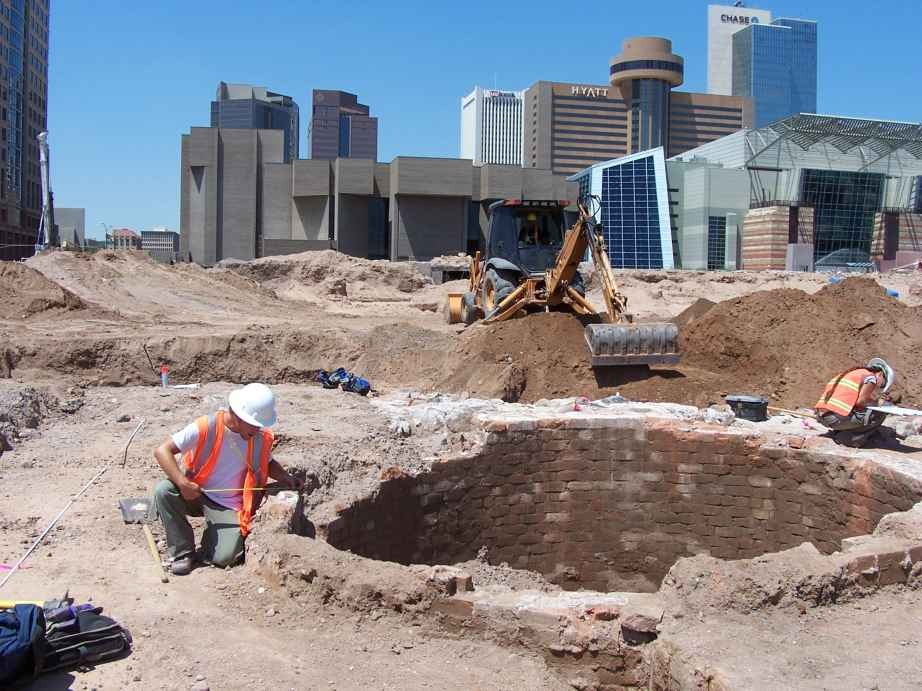Phoenix launches a Citywide food drive to assist residents experiencing food insecurity during the holidays.
Archaeology
The City of Phoenix has a City Archaeology Office headquartered at the S'edav Va'aki Museum. It is the official repository and office for the City of Phoenix.
Archaeological functions of the City are managed by the City Archaeologist. The City of Phoenix appointed a City Archaeologist in 1929, the first in the nation. Currently, only a small number of other cities have staff archaeologists (e.g., Alexandria, Virginia; Boston, Massachusetts; Saint Augustine, Florida; and New York City, New York).
The primary role of the City Archaeology Office is to ensure that the City is in compliance with all federal, state, and local laws and regulations regarding the identification and proper treatment of historic and cultural districts, properties, objects, and other archaeological resources. The intent of these regulations is to (1) identify and study properties of historic, cultural or scientific value before destruction, (2) preserve sites of unique scientific, historic or cultural value, (3) identify human remains and preserve them in situ or move them for reburial according to state laws (ARS 41-844 and 41-865).
The City Archaeologist also works with S'edav Va'aki Museum staff to offer a wide variety of interesting and educational activities throughout the year. Programs offered by the museum fit within its mission to provide educational experiences that enhance people's understanding of the ancestral O'Odham and Sonoran Desert People (including what archaeologists call the "Hohokam" cultural tradition), other peoples of the Greater U.S.-Southwest and Mexican Northwest, past and present, and the science of archaeology. To view various programs please go to our Events page.

What Does the City Archaeologist Do?
A City Archaeologist is responsible for many things in our City. They assess all development projects that are city-sponsored or on city land for the potential impact on archaeological sites and coordinate the development of treatment plans if impacts are identified. They manage all city-sponsored archaeological projects that involve federal agencies (e.g., Housing and Urban Development, Federal Housing Administration, and Federal Aviation Administration) and state agencies (e.g., Arizona State Land Department) and coordinate these with the State Historic Preservation Office and the Advisory Council on Historic Preservation. They conduct research on the history and prehistory of the City of Phoenix for public exhibits and publications, and provide public lectures and tours about Phoenix-area archaeology.

Archaeological Sites within the City of Phoenix
There are hundreds of prehistoric and historic archaeology sites within the City of Phoenix. They are located in the downtown area, along desert rivers and washes, and in the foothills and canyons of the mountain preserves. Archaeological sites are found under parking lots, city streets, and playing fields in city parks; they also are associated with historic buildings. Common archaeological sites include: prehistoric Hohokam villages, canals, and rock art (AD 1-1450), historic O'Odham and Piipaash communities (1540-1950), historic territorial Phoenix (1870-1912), other historical archaeological sites,and traditional cultural properties (such as shrines, mountain tops, and more).
Contact the Archaeology Office at 602-495-0900 or archaeology@phoenix.gov.
